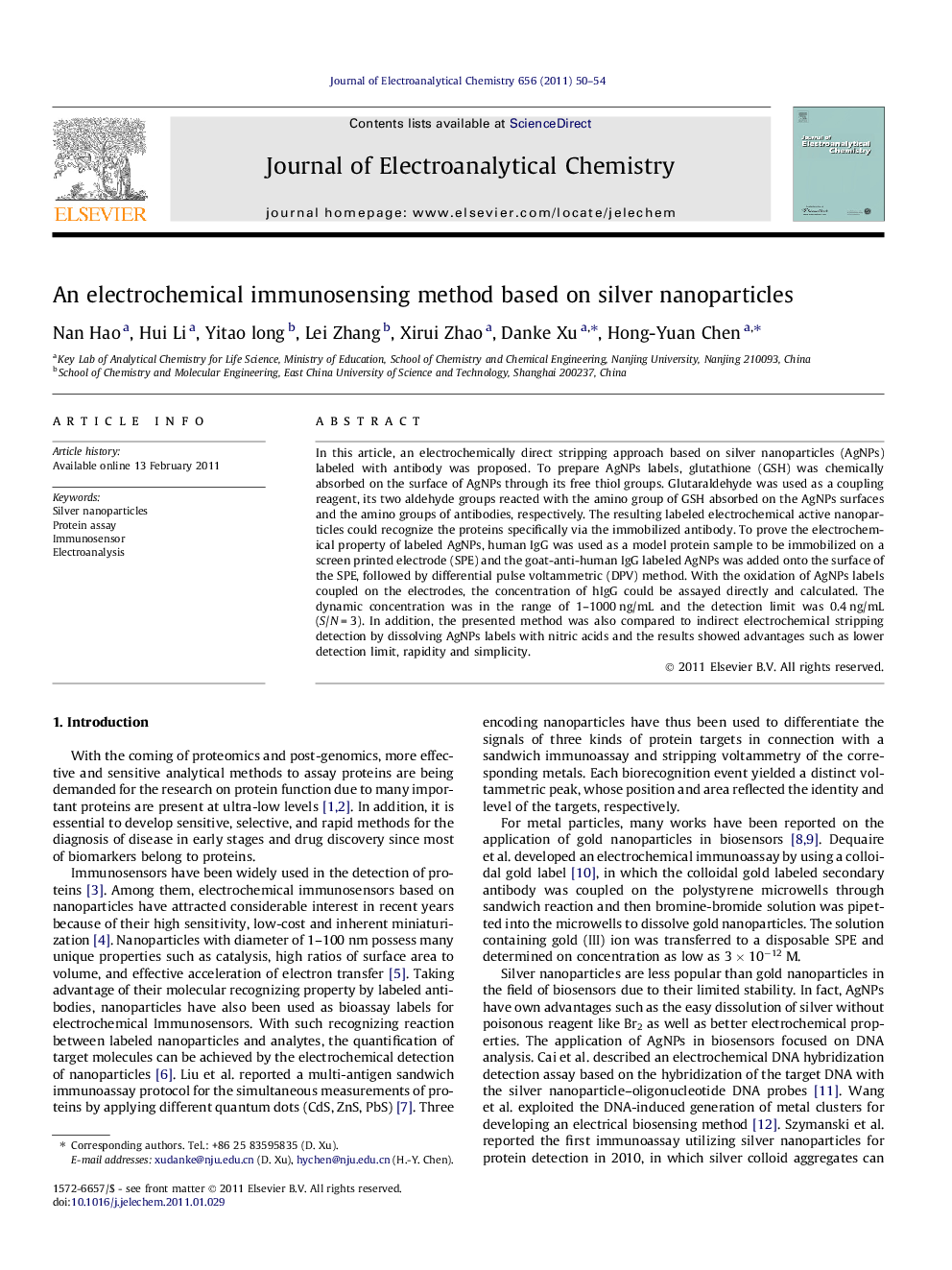| Article ID | Journal | Published Year | Pages | File Type |
|---|---|---|---|---|
| 219555 | Journal of Electroanalytical Chemistry | 2011 | 5 Pages |
In this article, an electrochemically direct stripping approach based on silver nanoparticles (AgNPs) labeled with antibody was proposed. To prepare AgNPs labels, glutathione (GSH) was chemically absorbed on the surface of AgNPs through its free thiol groups. Glutaraldehyde was used as a coupling reagent, its two aldehyde groups reacted with the amino group of GSH absorbed on the AgNPs surfaces and the amino groups of antibodies, respectively. The resulting labeled electrochemical active nanoparticles could recognize the proteins specifically via the immobilized antibody. To prove the electrochemical property of labeled AgNPs, human IgG was used as a model protein sample to be immobilized on a screen printed electrode (SPE) and the goat-anti-human IgG labeled AgNPs was added onto the surface of the SPE, followed by differential pulse voltammetric (DPV) method. With the oxidation of AgNPs labels coupled on the electrodes, the concentration of hIgG could be assayed directly and calculated. The dynamic concentration was in the range of 1–1000 ng/mL and the detection limit was 0.4 ng/mL (S/N = 3). In addition, the presented method was also compared to indirect electrochemical stripping detection by dissolving AgNPs labels with nitric acids and the results showed advantages such as lower detection limit, rapidity and simplicity.
Research highlights► In this article an electrochemically direct stripping approach based on silver nanoparticles (AgNPs) labeled with antibody was proposed. ► Human IgG was used as a model protein sample to be immobilized on a screen printed electrode and the goat-anti-human IgG labeled AgNPs was added onto the surface of the SPE. ► With the oxidation of AgNPs labels, the concentration of hIgG could be assayed directly and calculated. ► The dynamic concentration was in the range of 1–1000 ng/mL and the detection limit was 0.4 ng/mL (S/N = 3).
